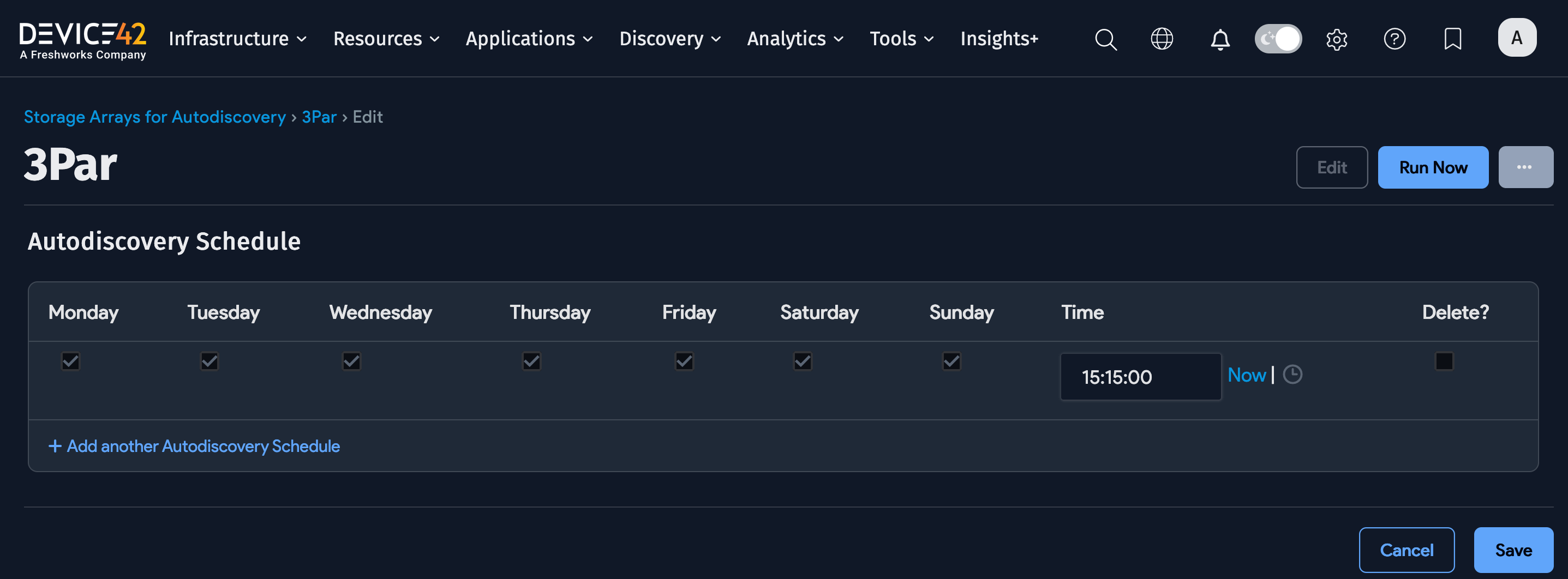Storage Arrays Autodiscovery
Storage Arrays are identified and returned by Device42 Storage Arrays autodiscovery. On the Storage Discovery page, you will find resource details, related resources, and topology maps.
Storage Array Platforms
Click the Platform dropdown to view and select the available storage array type for a discovery job.
If you want to see the discovered storage arrays on the Devices list page, then discover storage arrays by SNMP.
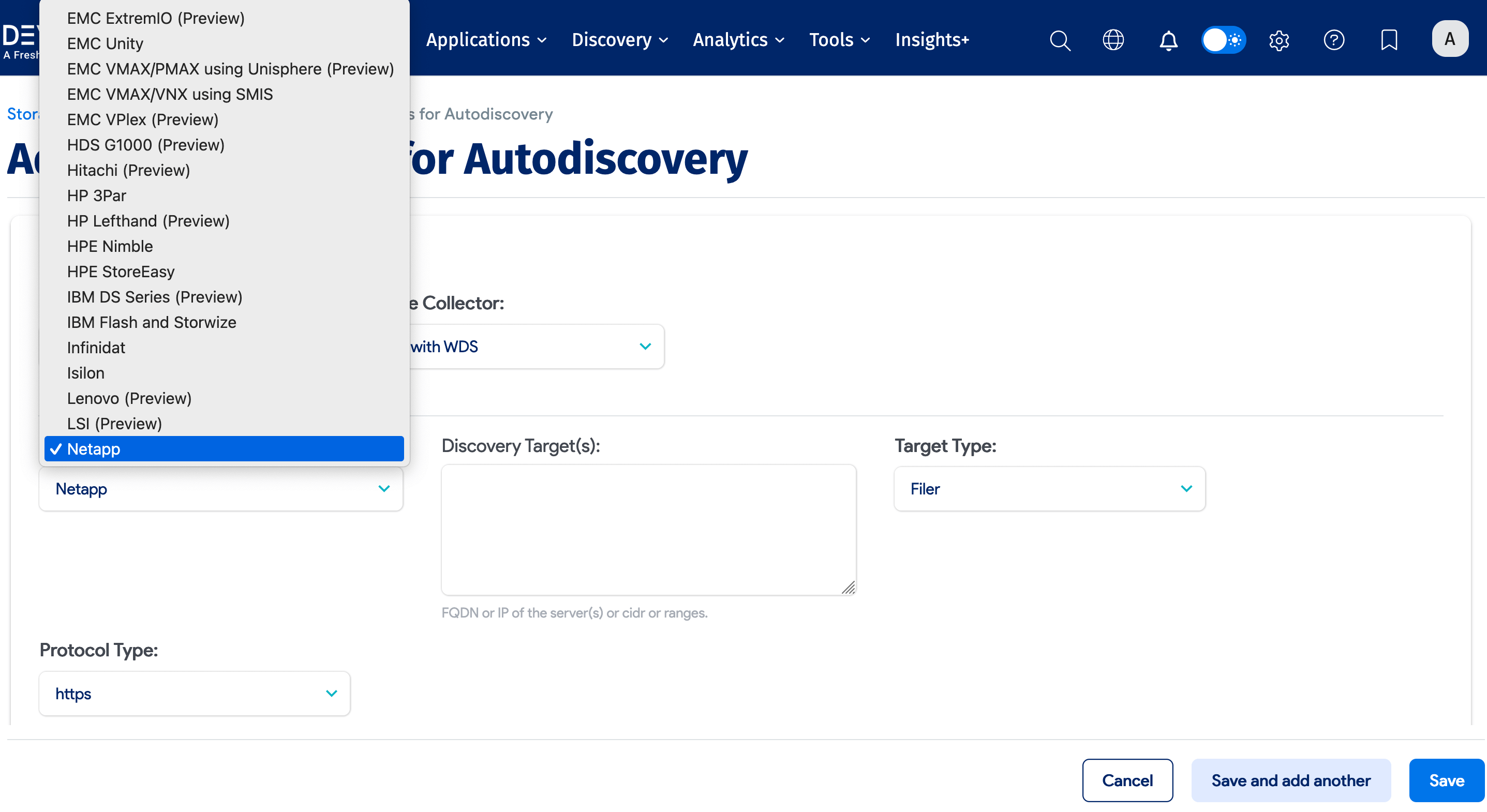
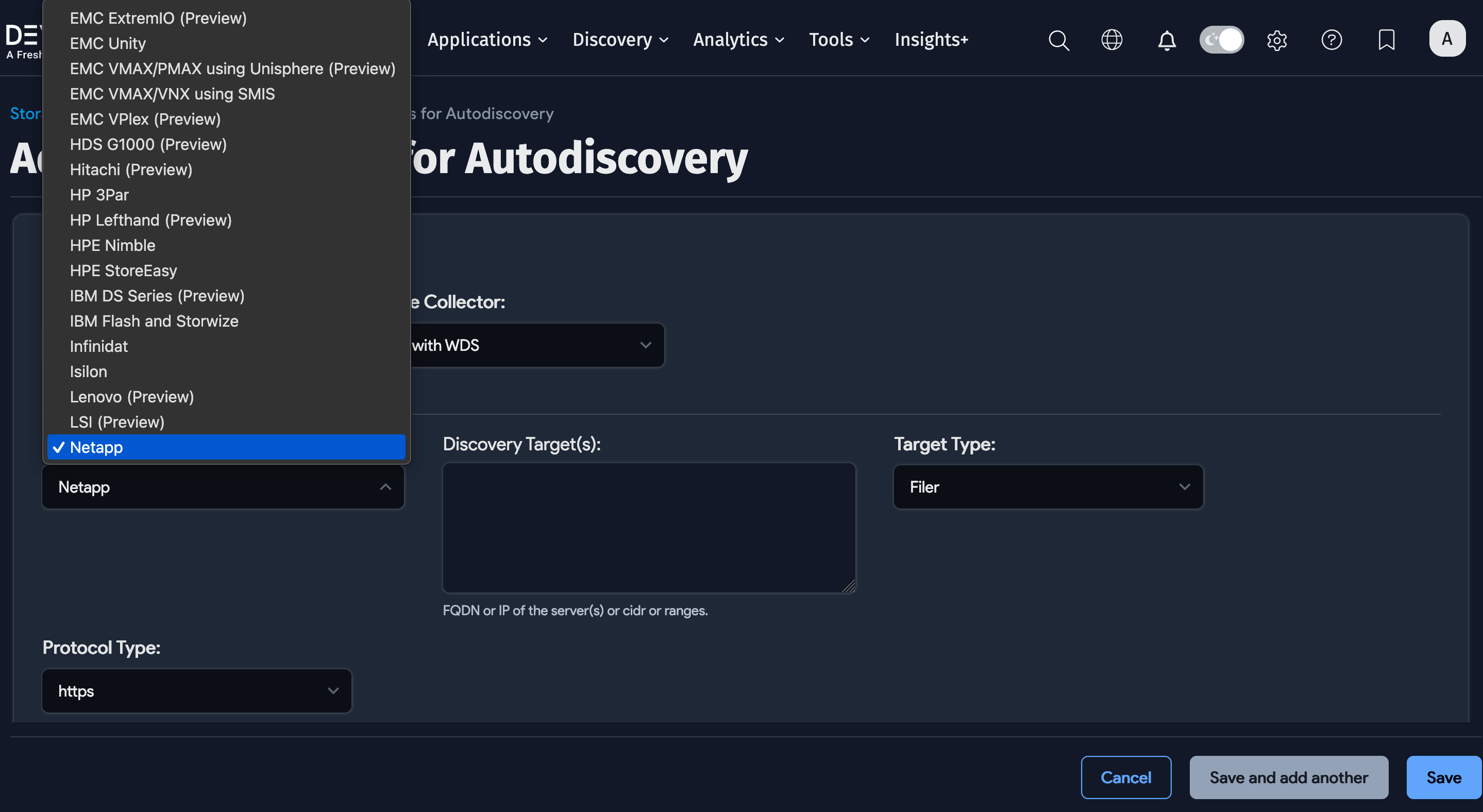
The "(Preview)" tag in the Platform list indicates that these arrays have not been fully tested due to a lack of access to testing equipment, and full functionality cannot be guaranteed at this time. Additional versions and configurations may or may not be discovered, but we cannot guarantee support for them at this time. The list will be updated as more testing is completed.
We currently support the following platforms:
| Celerra (Preview) | EMC VPlex (Preview) | Lenovo (Preview) |
| Dell Compellent | HDS G1000 (Preview) | LSI (Preview) |
| Dell EqualLogic (Preview) | Hitachi (Preview) | Netapp |
| Dell PowerStore (Preview) | HP 3Par | Nutanix |
| EMC Data Domain | HP Lefthand (Preview) | Oracle ZFS |
| EMC ECS (Preview) | HPE Nimble | Pure Storage |
| EMC ExtremIO (Preview) | HPE StoreEasy | Purity FlashBlade (Preview) |
| EMC Unity | IBM DS Series (Preview) | Recoverpoint (Preview) |
| EMC VMAX/PMAX using Unisphere | IBM Flash and Storwize | Tintri (Preview) |
| EMC VMAX/VNX using SMIS | Infinidat | UCS (Preview) |
Additional Storage Array Autodiscovery Information
Use the links below to access additional information about access protocols and minimum permissions for storage array autodiscovery.
Dell/EMC Arrays
See the Dell/EMC Autodiscovery page for more information about the following storage arrays:
- Dell Compellent
- Dell PowerStore
- VNX or VMAX using EMC SMIS Provider
- EMC Data Domain
- EMC Unity
- Isilon
HP Arrays
See the HP Autodiscovery page for more information about the following storage arrays:
- HP Nimble
- HPE StoreEasy
- HP 3PAR
IBM Arrays
See the IBM Autodiscovery page for more information about the following storage array:
- IBM V7000/Storwize
Lenovo Arrays
See the Lenovo Autodiscovery page for more information about the following storage arrays:
- ThinkSystem DE2000
- ThinkSystem DE4000
- ThinkSystem DE6000
- All newer ThinkSystem arrays
All Other Storage Arrays
See the All Other Storage Autodiscovery page for more information about the following storage arrays:
- Infinidat
- Netapp Filers
- Nutanix
- Oracle ZFS
- Pure Storage
Add a Storage Array Autodiscovery Job
Select Discovery > Storage Arrays in the Device42 menu to display the Storage Arrays discovery list page, and then Create a new discovery job.
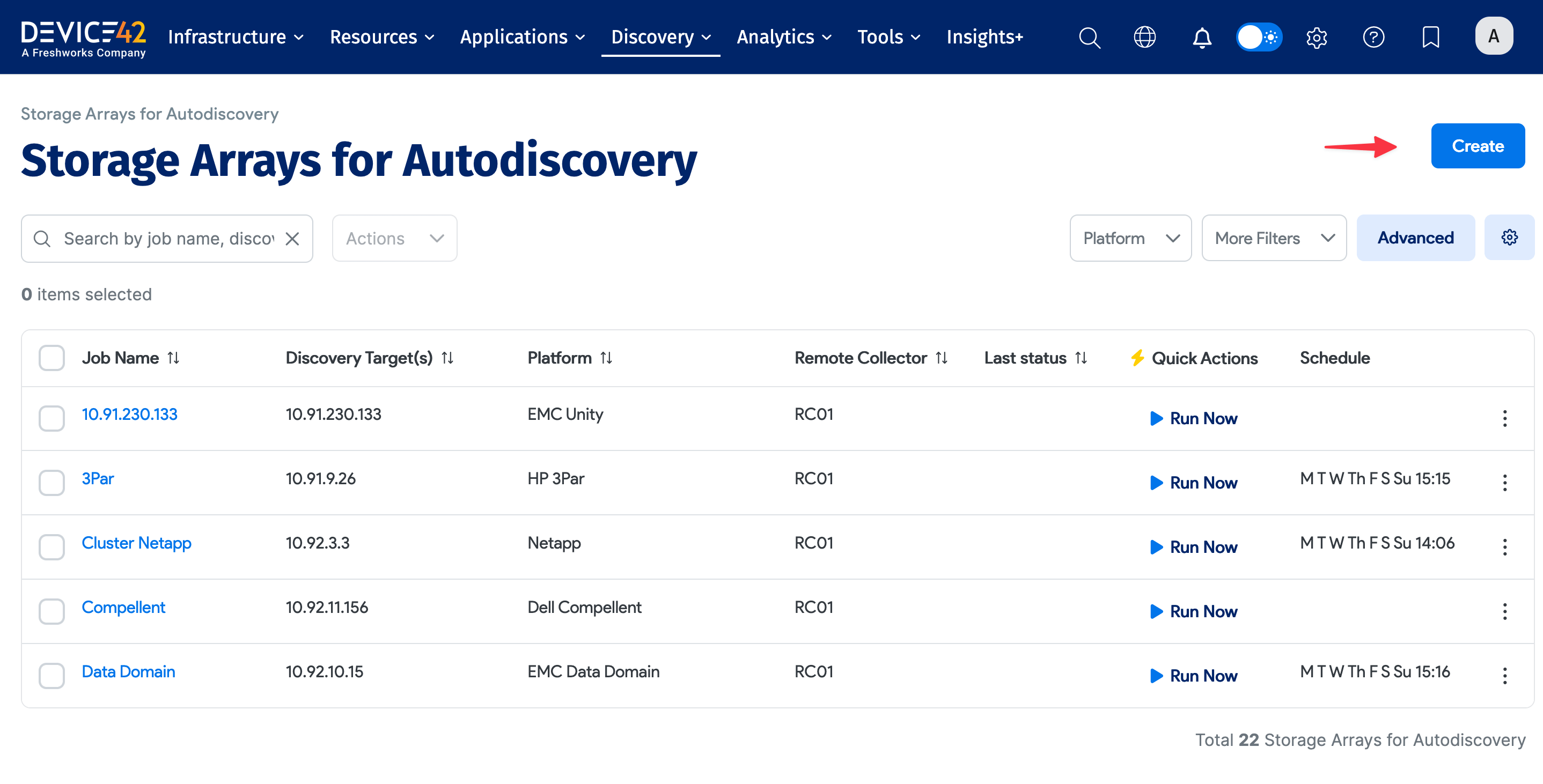
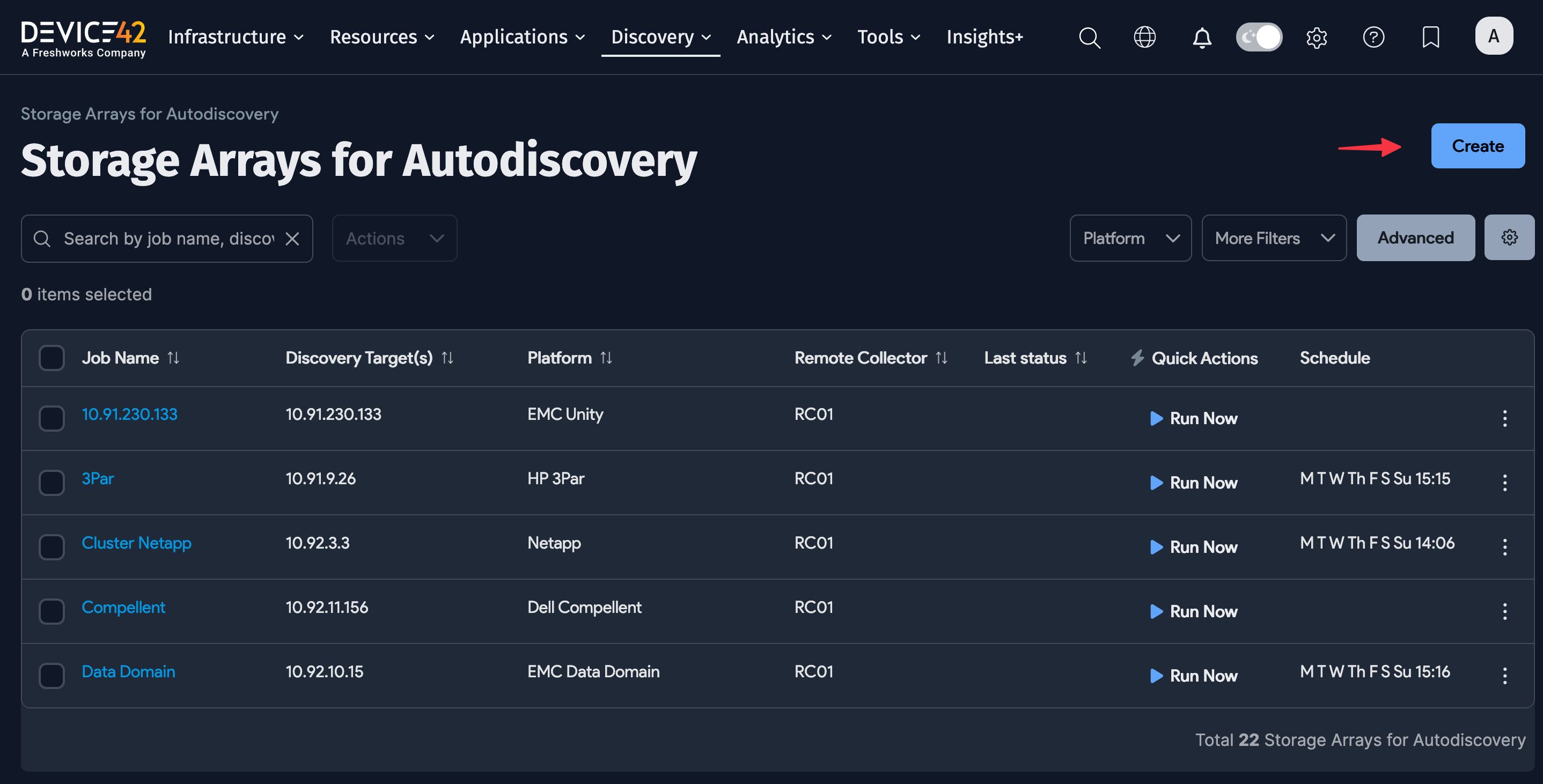
Enter or select the following information to create the autodiscovery job:
- Job Name: Enter a unique name for the job.
- Remote Collector: Select the RC to use for the job. An RC is required for Storage Arrays discovery.
- Platform: Select the storage array platform or vendor.
- Discovery Targets: Select the FQDN or IPs of the servers or CIDR or ranges.
- Target Type: Select Filer, DFM, or OCUM (displayed depending on the Platform selected).
- Protocol Type: Select HTTPS, HTTP, or insecure-HTTPS (displayed depending on the Platform selected).
- Enable Performance Data Collection: Yes/No.
- Performance Data Sampling Interval: Select the time interval for data sampling (if selected).
- Action for Storage Array not found: Choose how to handle unfound Storage Arrays in subsequent discovery — Keep Array Resource or Delete Array Resource.
- Discovery Target(s) Credential(s): Enter or select the username and password for the discovery job.
When you are done, click Save, and you'll see the Run Now button, which you can use to run the job immediately. You can also run the job immediately from the Storage Array list page.
Schedule the Job
Use the Autodiscovery Schedule section of the page to schedule when your job runs. You can create multiple schedules for each job, specifying the days of the week and the times when it runs.
Autodiscovery scheduling behavior: Newly created jobs will not run on the first day they are created, to prevent an excessive number of jobs from running simultaneously. If you would like to run a job after its initial creation, click the Run Now button.

